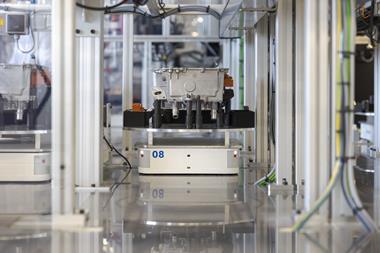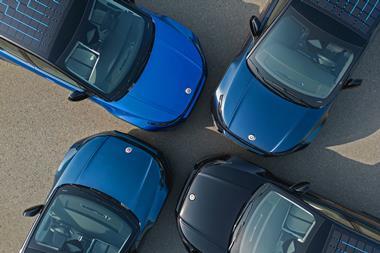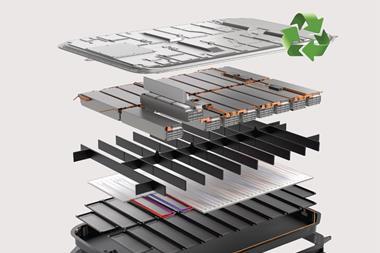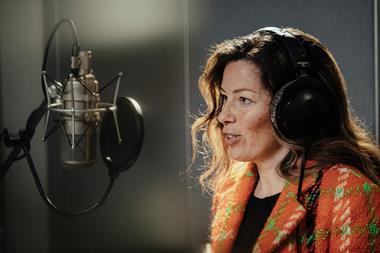Separate production lines are used to build conventionally powered vehicles and the electrified i models at BMW Leipzig, but this could soon change
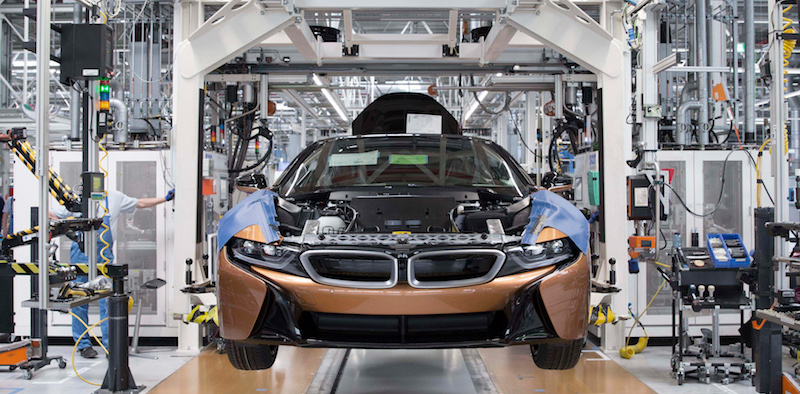 A gulf remains between electric vehicles (EVs)and those that are powered solely by internal combustion engines (ICEs). This is evident in consumer demand, in range, in cost and in current production figures. BMW is one of many OEMs hoping to close this gap, and its plant in Leipzig, Germany, could play a vital role.
A gulf remains between electric vehicles (EVs)and those that are powered solely by internal combustion engines (ICEs). This is evident in consumer demand, in range, in cost and in current production figures. BMW is one of many OEMs hoping to close this gap, and its plant in Leipzig, Germany, could play a vital role.
Over 960 vehicles are produced at the facility every day. The majority of these are 1 and 2 Series models, while the i3 and i8 models account for about 130 units. The i brand vehicles have been rolling off the production lines since 2013 and 2014 respectively. Variants include the i3 sport and, most recently, the i8 Roadster and an updated i8 Coupe have been added. “We are proud to produce another top-notch product at our plant,” commented plant director Hans-Peter Kemser at the Roadster launch. “An important factor for that is the know-how and long-time experience of our employees in Leipzig with the production of EVs.”
BMW recently announced that a pure-electric Mini would hit the market in 2019, ten years after it started testing the Mini E in Los Angeles and New York. The powertrains used in the new model will be made at the Dingolfing and Landshut plants in Germany before they are integrated in the car at the Oxford plant, UK.
Speaking at the BMW Annual Accounts Press Conference in March 2018, chairman Harold Krüger confirmed that the first all-electric car under the BMW marque will enter series production in 2020. Called the iX3, the model will make its debut this year at the Beijing Auto Show. This will be joined by the i4 in the same year. Based on the i Vision Dynamics, which was shown at the 2017 Frankfurt Motor Show, the i4 saloon will have a range of 435 miles on a single charge. The term ‘Tesla challenger’ has already been whispered by several industry analysts.
The BMW iNext will follow soon after the iX3 and i4, and is likely to enter production during 2021. Details remain sparse, but Krüger has stated that the model will be built in Germany and will come equipped with autonomous driving and connected car features as well as an electric powertrain.
Speaking to AMS, Kemser said that few changes needed to be made to production lines before the plant started making the two new i8 variants: “The production of the new Roadster and Coupe is based on the same manufacturing process used for the i8 that has been produced in Leipzig since 2014, so we integrated the new models on the same production line, since most of the production steps are similar. The assembly process of these two cars is highly individual and handcrafted.”
Plans for integrationEach i model passes through the main sections at the plant: CFK production; exterior components (production of body shell plastic components); BMW i bodyshop; and assembly. Back in 2013, a new production line was specially installed at Leipzig in order to house these steps, while the existing line is primarily reserved for the production of models that are solely powered by ICEs. “Since there are two separate production facilities onsite, the production of the conventional models is not affected by the introduction of new i models,” Kemser clarified.
However, he also revealed that the company is planning to build all models, whether they are electrified or not, on the same production line in the future. This could mean major changes at Leipzig: “In the long term, the BMW Group Production System strives for the integration of all different types of model derivatives on one assembly line, no matter which kind of powertrain is ordered by the customer – whether it is traditional, hybrid or full electric.
“This kind of flexibility and integration already exists in some areas of our plant, as we are currently building six different models including one hybrid on our conventional assembly line.”
Numerous variants of the 2 Series are also made at Leipzig, including the Active Tourer, the convertible and the Coupe, alongside the 225xe iPerformance Active Tourer and the M2 Coupe. With such a wide variety of models and a diverse range of unique components like the soft-top roof on the Roadster, flexibility of the production lines is crucial, and the latest upgrade to the plant could play an important role.
An extension to the paintshop is under construction, while enhancements are also being made to the bodyshop and assembly areas. Building work is scheduled to finish in 2020 and is costing a total of €200m ($245.64m).
Kemser is confident that these upgrades will increase production flexibility and allow the plant to react to market requirements. “We are delighted by the ongoing high demand for the BMW vehicles we produce here in Leipzig,” Kemser stated. “This further development of the plant is an important move and means we will have the necessary competitive structures in place to continue building vehicles here in the future.”
Progress in printingAnother strategy that could allow BMW to enhance its production flexibility is the use of 3D printing. Due to high costs and the length of time it takes to make a component using the current technology, 3D printing has been primarily restrticted to prototyping. However, the German OEM is now using it to create components for mass-market production vehicles.
“With the BMW i8 Roadster we took a next step to fit small 3D-printed component parts into our assembly process,” Kemser revealed. “It’s the first time ever that we are using this state-of-the-art technology in series production.”
Small components made from 3D printers, such as plastic holders, centre lock buttons and electronic parking brakes, have been used in the Rolls-Royce Phantom since 2012 and the Rolls-Royce Dawn since 2015. Eager to expand the use of these parts in its models, BMW has been pursuing advanced techniques at its Additive Manufacturing Centre in Munich, Germany. Planar printing technology, for example, enables faster production times than conventional point-to-point 3D printing methods by using infrared to expose surfaces.

“Planar technologies are central to the use of additive processes in series production,” explained Jens Ertel, head of the BMW Group’s Additive Manufacturing Centre. “The most recent example can be found in the preliminary trials of the HP Multi Jet Fusion technology. The process will initially be used in prototyping, but we plan to extend it into series production over the long term.”
Another method that BMW has been exploring is continuous liquid interface production (CLIP), which also helps to shorten production times of 3D-printed parts. It works by using photo polymerisation to make smooth-sided objects out of resins. The OEM has used the process to make customised side indicators for the DriveNow car-sharing fleet that is operating in several cities across Europe.
As well as using 3D printed components in BMW models for the first time, Kemser said that one of the major challenges when starting the production of the Roadster and Coupe was to prepare the plant’s workforce. “The main focus in introducing the two models was to train our employees in assembling new parts such as the convertible soft-top,” he added. “Our employees also have to pass specific training programmes in regard to the use of high-voltage technology and completely new material combinations.”
Green from start to finishLike many OEMs, BMW is also looking to use second-hand EV batteries to make its plants more efficient and environmentally-friendly. According to a study published by the University of California Berkeley, the use of batteries from EVs could be critical in order to “decarbonise our electricity supply over the coming decades.” Furthermore, it could help to offset the upfront cost of the EV itself.
To coincide with the 100,00th i3 rolling off the line in October 2017, Joachim Kolling, head of energy services at the BMW Group, announced the official commissioning of the Battery Storage Farm Leipzig. Batteries that were previously installed in i3 cars are given a second life, storing renewable energy produced from the wind turbines located on the factory grounds and feeding it to the plant to lower energy costs and cut emissions. This strategy will help the i3 to be as green at the end of its life as during.
























